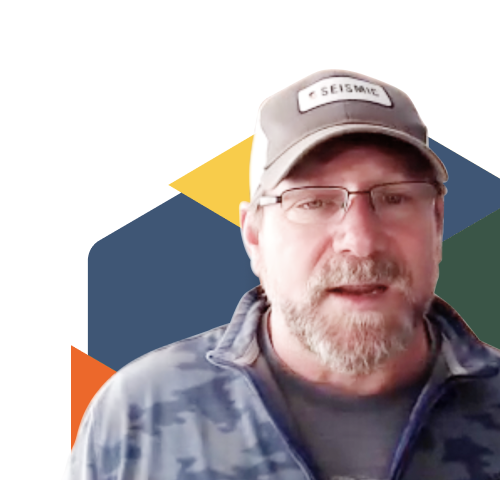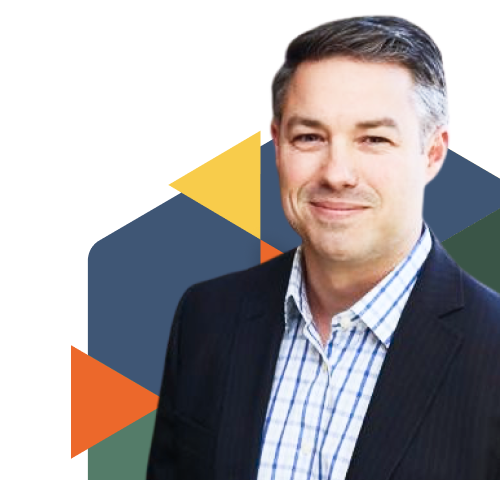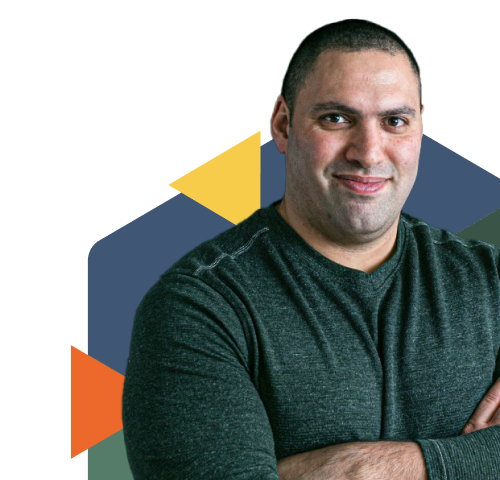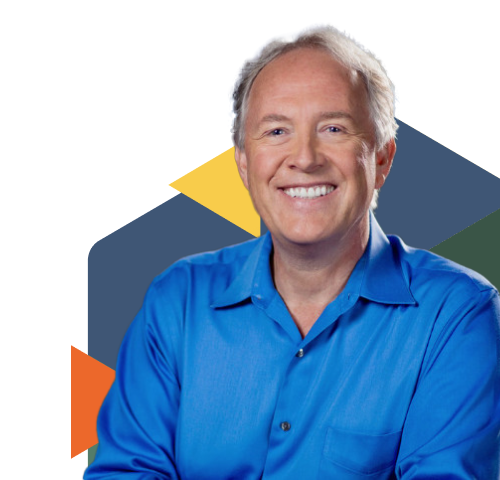Expert Advice From The Burning Presales Podcast
It’s been a while since we shared tidbits from our guests on the Burning Presales Podcast. In the last 10 episodes we’ve covered everything from elevating the function of Presales inside every revenue organization, to running great discovery calls, and just about everything in between.

James Kaikis
Q19 – What’s changing in B2B that reinforces the value of Presales?
“It’s no longer sell it and forget it. You’re now accountable for renewal and churn and upsell and expansion. There is a need for having an additional technical sales resource throughout the lifecycle. Buyers want to get their hands on products, they want to do their homework. There’s a lot of research out there that says buyers are 50, 60, 70 percent of the way down their buyer decision before they even contact sales. They need someone to validate them, they don’t need you to totally take them from 0 to 100. Sales Engineers play a big role in that.”
“When you take the sales motion out of it and you insert the Sales Engineer to be what I like to call a ‘customer centric problem solver,’ they’re putting the customer first. They’ve done some technical validation, they understand what they need, and they don’t need the sales’ NASCAR slide around it. What they need is someone to say, ‘Yes, we can do this. No, we can’t do this. This is what your life is going to look like with this software’.”
Q20 – How do you elevate Presales from demo jockey to sales co-pilot?
There’s a lot of confusion about Presales (both within and outside the function). A lot of SEs feel like they have to justify their existence in extraordinary ways. Of course everyone should have to justify the value they bring, but too often Presales gets pigeon-holed into the function of demo jockey.
James says, “There’s so much more a Sales Engineer can bring to a sales cycle than just doing a demo…You want them to be able to see this role as a strategic asset. As sales continue to change, the companies that are unlocking the power of the sales engineer to do more than just demo, are reaping the benefit.”
“I have a strong point of view that the best sales leaders get it. They know how to unlock the power of the sales engineer, but a lot of times they need to see the proof, they need to see the success. Take a very strategic customer and build a strategic plan for it, build out the workshops, build out an in person Proof of Concept training. And then once you’ve built that success with your teams and you’re seeing deal close, you have a better justification to go to your sales leader and say, ‘Look, we’ve been running this kind of sales process and these are some of the things we’ve done differently, and look at the impact that it’s made’.”

Brian Cotter
Q21- How do you build, manage, and scale Presales teams?
Brian laid out a 4-part foundation for building, managing, and scaling Presales teams, including 3 tenets of Presales success.
The 4 Big Rocks of Presales Foundation:
- Building a TEAM.
- Building a STORY.
- Building ALIGNMENT.
- Building a COMMUNITY.
The 3 Tenets for Re-calibrating Presales
- The voice of the SE really needs to be better amplified.
- Storytelling is key.
- We are living through a Presales renaissance.
It was so much information, we had to create an entire blog to just scratch the surface. You can listen to his info packed episode or read the blog to get more details.

Todd Janzen
Q22 – Burning Presales How do SEs do fewer wasted demos and more high impact activities?
First, Todd had some nice things to say about our podcast. I’d be remiss if I didn’t plug his testimonial here: “You’ve managed to capture years of thought leadership in 21 episodes.”
More importantly, though, he shared how teams might work towards doing fewer wasted demos. “You know that buying has changed. We need to move from a selling motion to a buying motion. SEs are the most customer-centric group in the selling motion, so this whole idea of Buyer Enablement just fits perfectly, who we are, what the customer wants, what we do. Buyers want more from us. We want a bigger seat at the table, but how do we carve out more of that time? 30 to 50% of demos are unqualified. That is the time that we need to focus on getting back.”
Todd lists how you get started:
- Become familiar with the 6 demo types (listen to how Todd interprets and applies the 6 demos to Salesforce)
- Perform fewer live demos (be more selective about what merits live demo time)
- Apply demo automation to your strategy

Akshat Srivastava
Q23 – How do you measure SE performance and how can Presales be successful?
“It really depends on the company you’re at, but SEs are measured mostly on their activity with their customers or their prospects. So it can be the amount of revenue they bring into the organization. It can be the impact they have on their current customer or prospect. And it can be what they did for their customer that helped their customer get to the next level or solve the problem that their respective product solves.”
“Sometimes what is overlooked is how important you are to the team. How am I helping others in my team as an SE? You might not be producing the most revenue or growth, you might be the second or third best, but you’re probably the person who goes above and beyond to help out a team member. If somebody’s out, you’re the person they reach out to to cover for them because they really trust your customer skills and your follow up skills, your ownership. You’re helping your manager and your manager’s manager to run initiatives that are outside your job duties. You’re helping Product by telling them what’s new in the industry. What you’re hearing from customers – that’s of the utmost importance. You reach out to support staff to help them out with anything you can while they’re solving a ticket. These are some things that really can’t be measured when it comes to putting your name on a Salesforce dashboard. But this is the social capital that you build in your organization and it really, really goes a long way.”
Q24 – How do SEs grow and stay motivated in their careers?
Something that’s come up again and again is the potential career paths for SEs. Akshat said, “In terms of growth, after the 2 or 3 year mark, there’s multiple roads that an SE can take in the same company. One of them can be going into leadership. The second path is perhaps to become a Principal Solution Engineer, which would mean more responsibilities with the customers. Beyond these paths, there are other avenues such as product management because SEs are working closely with so many lines of business, with product, with Engineering, with support organizations, and of course with sales.”

Ramzi Marjaba
Q25 – How do SEs stop thinking of themselves as subordinate to sales?
“Stop being reactive and become proactive without stepping on your sales person’s toes. The SEs have to build trust with the Account Manager. If you’ve had an SE schedule a call with the customer without your knowledge and then screw up the deal, then you’re going to throw down the hammer. So we have to build trust and let the sales person know, ‘I’m not here to screw up your deal. I’m here to help you.’ I’m not a subordinate of the sales person, but I want to help them achieve their goal.”
Q26 – What’s the role of the SE in the customer lifecycle?
“I believe it’s wherever they want to fit.” So there you have it. Let the SE decide!
“It’s up to the individual in the end where they want to be. Some people are happy just being there, waiting for salespeople to ask them questions. Other people are on the other end of the spectrum.”
“A lot of Sales Engineers are focused on the engineering side, and they’re great at answering the technical questions. At that point, it’s up to the Sales Engineer Manager and the Sales Manager to hook them up with the right sales people. Because there’s not one SE that has the entire package. I haven’t seen that, except maybe Mark Green (shout out to our Director or Presales and Buyer Enablement). Generally speaking, we’re missing in some areas. So you’re going to have to play like a jigsaw puzzle and fit people together.”

Patrick Pissang
Q27 – What are 3 transformational forces in Sales Engineering right now?
Number 1: Skill Upgrade. What I mean by that is every SE right now will face competition more than in the past because everybody’s getting better. Your competitor SE is getting better. If you don’t take care of getting better, you’ll be left behind. So this is one major force. The need for skill and the demand for skill.
Number 2: Presales Tools. It’s all the applications that spawn like mushrooms. Consensus plays a huge part in this. It feels like every month, there’s a new application for SE. There’s a new application for everything. For example, demo automation for POC, for discovery, for sentiment evaluation, for everything. What this does is a cool effect. It takes away the chores and repetitive tasks.
Number 3: Hiring. The hiring pipelines are empty across the board. I was asked recently, ‘What can we do to hire more talent?’ And I really think it’s to be visible, create familiarity in social networks, and show your culture. Show what kind of leader you are. Show why your company is the best to join. It will take months if not a year to have some effect you can measure, but it’s something you should start today because there won’t be many people available in the short term or mid term future.”

John Care
Q28 – How do SEs get AEs to let them do adequate discovery? What is that?
We saved our toughest questions for John, “That’s the ‘philosophical meaning of life’ question…I think the interaction between SEs and AEs when it comes to discovery is the area where there’s the most friction between the two roles.”
“The number one class that my company delivers globally is a class called Business Value Discovery. Basically, don’t talk tech until you’ve uncovered the business problems and here’s the technique for uncovering the business problems and linking them back to your portfolio of products. When we deliver this class, it doesn’t matter where – Sydney, Stockholm, Seattle – the number one piece of feedback we get is ‘The Reps should learn this as well!’”
“The first thing is the SE needs to clearly lay out with the AE what they as a team as a partnership what they need to uncover in business value discovery and figure out who’s going to do it. It doesn’t really matter who does it, but someone needs to do it and do it in such a way that the SE can then deliver the most amazing demo that they possibly can.”
Three key drivers:
- Revenue – how is that company going to make money using your tech
- Cost – How are they going to save money using your tech
- Risk – how will they mitigate corporates or professional risk using your tech
“It’s uncovering how your technology can relate back to that, produce changes in time, money, and people such that the company solves their problem. It’s not just pains, everyone talks about pains and how you solve those pains, but it’s also about gains.”
Q29 – How do you Sell the value of Presales to Sales and Finance?
“This sounds like an absolute no brainer, but I’m stunned by how many SE organizations around the world kind of have the better mouse trap approach. ‘We’re a better organization. People will see and understand how good we are, but it’s the same as when customers see your technology. Unless you point out what’s so cool and good about it, the customer makes up their own mind about it and that might not always be the best thing.”
“You need to have some data behind it. And this is certainly a conversation I have with CROs and VP of Sales and VPs of Sales Engineering practically every week.”
“What you need to look at is what truly is the impact that an SE org has on a pipeline.
- What are they doing to put additional deals into the pipeline?
- What are they doing to potentially speed deals up through the pipeline?
- What can you do to collect, collate, and then use competitive information?
- An overlooked value, what are they doing to train and support third parties?
“There are so many ways for the SE org to show their value and then they need to publicize it after. If you get a win, there’s always the sales flash that goes out about a win. Well, do a win flash as well that highlights what it was that the SE did to land that deal, kill the competition, expand the deal, bring in a third party that other SEs reading it can utilize in their sales motion.”
We loved this episode so much, we already turned it into a blog post. Read more about what John had to say about the AE and SE relationship and discovery here.
